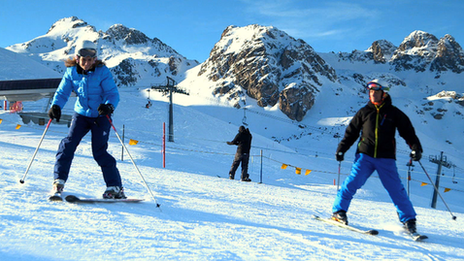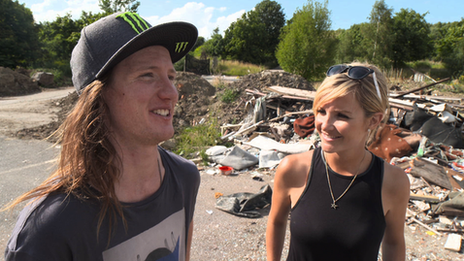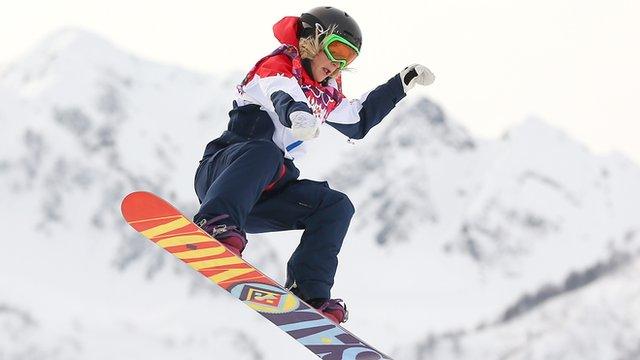Get Inspired: How to get into Freestyle Skiing
- Published
Get Inspired - Katie Summerhayes
Freestyle skiing encompasses disciplines you will see at the Olympics such as aerials, moguls, ski cross and slopestyle.
Most freeski events have their origins in forms of acrobatic exhibition. Freestyle skiing received official recognition in 1979, with the first World Championships taking place in 1986.
Get involved
Freestyle is one of many winter sports enjoying a rise in popularity across the UK and, where a few years ago it may have been difficult to find freestyle clubs and snow centres of ski slopes with jumps, there are now many across the country - offering a range of activities for beginners or more experienced skiers.
Snowsport England provides a handy club and slope finder,, external as do Snowsport Wales, external and Snowsport Scotland,, external for those wanting to get started. For Snowsport in Northern Ireland the Ski Club of Northern Ireland has a Facebook, external page with information.
Snowsport England run a national participation campaign called GO SKI GO BOARD, external which offers all inclusive skiing sessions at an affordable price for both beginners and for those wanting to take their skiing that bit further.
You can also read the Snowsport England guide to Getting into Freestyle Skiing, external which offers information on freestyle clubs and camps.
British Ski and Snowboard (BSS) is the national governing body of skiing and snowboarding in the UK. BSS manages elite teams and also provides a pathway into those teams for those who want to compete at elite level.
Why is it good for you?
Freestyle is often one of the most intense sports you can compete in, combining acrobatics with a full-body workout that improves cardiovascular and circulatory systems. The acrobatic nature of the sport helps to tone the core muscle group, which will aid balance when taking part in disciplines such as aerials and moguls.
A day's worth of skiing can burn upwards of 3,000 calories, and freestyle is designed to be as much fun as it is exercise, with none of the grinding slog associated with cross-country.
History
Freestyle skiing began in Norway in the 1930s as cross-country skiers began to incorporate acrobatic elements in their skiing. The sport's first serious contests took place in the 1960s and 1970s, initially described as 'hot-dogging'.
The International Ski Federation finally gave recognition to freestyle in 1979 and the first World Championships followed seven years later in Tignes, France - now a location for the wildly popular X Games, which celebrate freeski among many other extreme sports.
Freestyle received Olympic recognition when it was given test event status at the Winter Games in Calgary in 1988, before both the moguls and aerials were introduced in 1992 and 1994 respectively.
Are you inspired to try Freestyle Skiing? Or maybe you are a keen enthusiast already? Get in touch and tell us your experience of the activity by tweeting us on @bbcgetinspired, external or email us on getinspired@bbc.co.uk., external
See our full list of activity guides for more inspiration.
- Published5 February 2019

- Published9 September 2013

- Published10 February 2014
